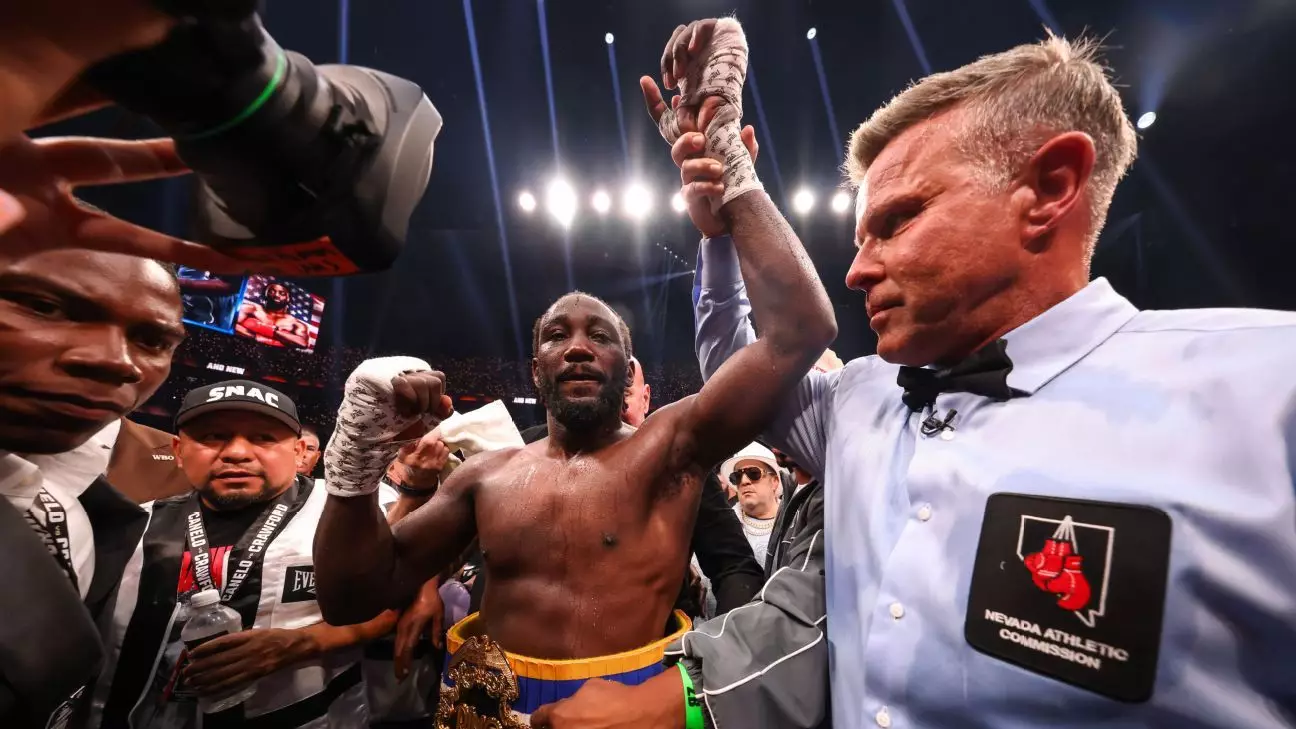The recent buzz in combat sports circles highlights a growing tension between traditional boxing legends and the emerging phenomenon of crossover fighters. After Terence Crawford’s impressive victory over Canelo Alvarez, which crowned him as the undisputed super middleweight champion, attention swiftly shifted to an unexpected contender—UFC’s Ilia Topuria. The 28-year-old featherweight star has set his sights on this boxing titan, claiming he can knock Crawford out and even attempting to stir the pot with provocative social media jabs. Crawford’s dismissive responses reveal not just a clash of personalities but also a deeper ideological rift on what the sport should prioritize. While Crossfit-inspired stunts and cross-promotions generate headlines and revenue, they threaten to overshadow the rich tradition and mastery that define boxing’s true greatness.
The Illusion of Cross-Sport Superiority
Ilia Topuria’s outspoken ambition to challenge Crawford resonates with a larger trend of MMA fighters craving the prestige and lucrative rewards of boxing’s elite. Yet, this surge of crossover hype often oversimplifies the profound differences between the disciplines. MMA fighters like Topuria excel in versatility—striking, grappling, and wrestling—whereas boxing champions like Crawford refine a singular, devastating skill set honed through decades of rigorous training. When Topuria claims he can end Crawford’s reign with a punch, it belies the reality that success in MMA doesn’t directly translate to boxing dominance.
This effort to blend genres feeds into a narrative that boxing must accept “superfights” with fighters from different arenas to stay relevant. But at what cost? The essence of boxing lies in the mastery of technique, footwork, timing, and mental toughness developed through years of dedicated training. Sacrificing these virtues for headline-grabbing spectacles risks diluting the sport’s integrity. The recent UFC fighter’s provocations seem more motivated by social media clout than genuine respect or understanding of boxing’s depth.
The Culture Clash: Boxing’s Heritage vs. Crossover Commerce
Crawford’s dismissive tone indicates a defensive stance rooted in respect for boxing’s history and the recognition that crossovers can sometimes erode the sport’s identity. His criticism of Topuria as a “clout chaser” underscores a belief that real boxing legends earn their status through consistent performances, not social media antics or UFC fame. This stance is emblematic of a broader debate: should boxing embrace alliances with MMA stars for financial gain, or protect its traditions and ethos?
What’s disturbing is the apparent undervaluing of fighters like Conor McGregor—a man who, despite various criticisms, proved the power of crossover appeal by drawing enormous audiences during his boxing bout with Floyd Mayweather Jr. But Crawford’s comparison indicts the UFC champion’s skills as vastly inferior, revealing skepticism about whether these endeavors contribute anything meaningful to boxing’s legacy or merely serve as marketing hype. To truly advance the sport, boxing must decide if it’s willing to prioritize its heritage of excellence or adopt a hybrid model defined by spectacle over substance.
Evolution or Erosion? The Future of Boxing in a Crossover Era
While the allure of cross-sport extravaganzas is undeniable in today’s entertainment-driven culture, the risk lies in undermining the arduous craftsmanship that made boxing a revered sport. Crawford’s seasoned perspective conveys his conviction that mastery cannot be bought or marketed. Genuine greatness stems from years of discipline, perseverance, and technical evolution—elements that cannot be replicated overnight with a social media campaign.
Yet, the reality remains that boxing’s mainstream appeal is under pressure from competing sports and the ever-present lure of viral moments. The challenge for boxing’s future lies in balancing the sport’s rich legacy with innovation that respects tradition. It must curate high-caliber matchups that showcase skill, not just spectacle. Superstars like Crawford need to stand firm against the siren call of quick fame through crossover fights that threaten to turn boxing into a glorified sideshow.
In the end, boxing’s strength is rooted in its history—that fighting spirit honed through decades of rigorous training and relentless pursuit of excellence. Embracing this ethos over fleeting social media fame will determine if the sport maintains its dignity or becomes just another fleeting headline in the modern combat landscape. The true champions are those who respect the craft and fight for greatness on their own terms—not because of viral challenges or social media fame.

